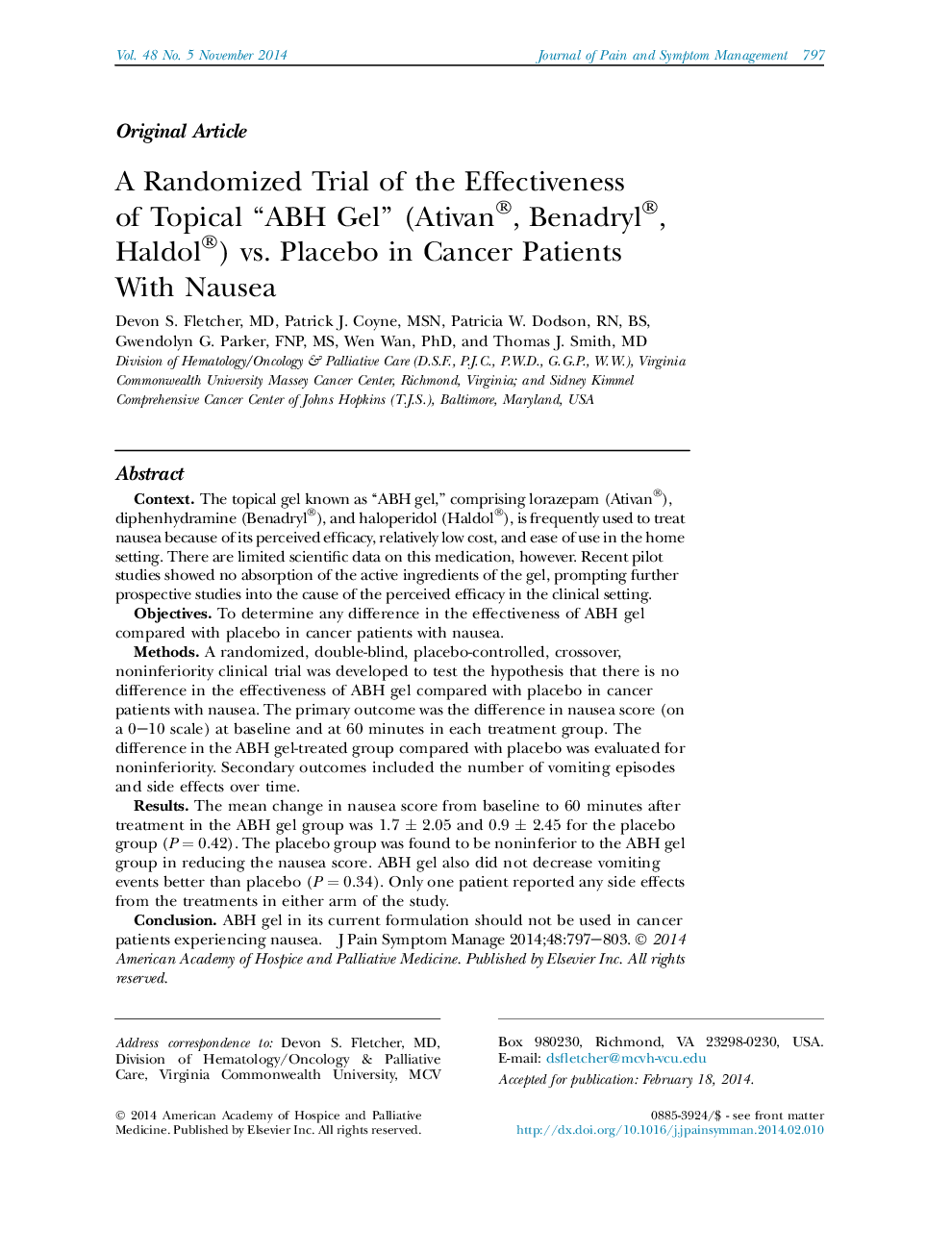| Article ID | Journal | Published Year | Pages | File Type |
|---|---|---|---|---|
| 2729858 | Journal of Pain and Symptom Management | 2014 | 7 Pages |
ContextThe topical gel known as “ABH gel,” comprising lorazepam (Ativan®), diphenhydramine (Benadryl®), and haloperidol (Haldol®), is frequently used to treat nausea because of its perceived efficacy, relatively low cost, and ease of use in the home setting. There are limited scientific data on this medication, however. Recent pilot studies showed no absorption of the active ingredients of the gel, prompting further prospective studies into the cause of the perceived efficacy in the clinical setting.ObjectivesTo determine any difference in the effectiveness of ABH gel compared with placebo in cancer patients with nausea.MethodsA randomized, double-blind, placebo-controlled, crossover, noninferiority clinical trial was developed to test the hypothesis that there is no difference in the effectiveness of ABH gel compared with placebo in cancer patients with nausea. The primary outcome was the difference in nausea score (on a 0–10 scale) at baseline and at 60 minutes in each treatment group. The difference in the ABH gel-treated group compared with placebo was evaluated for noninferiority. Secondary outcomes included the number of vomiting episodes and side effects over time.ResultsThe mean change in nausea score from baseline to 60 minutes after treatment in the ABH gel group was 1.7 ± 2.05 and 0.9 ± 2.45 for the placebo group (P = 0.42). The placebo group was found to be noninferior to the ABH gel group in reducing the nausea score. ABH gel also did not decrease vomiting events better than placebo (P = 0.34). Only one patient reported any side effects from the treatments in either arm of the study.ConclusionABH gel in its current formulation should not be used in cancer patients experiencing nausea.
